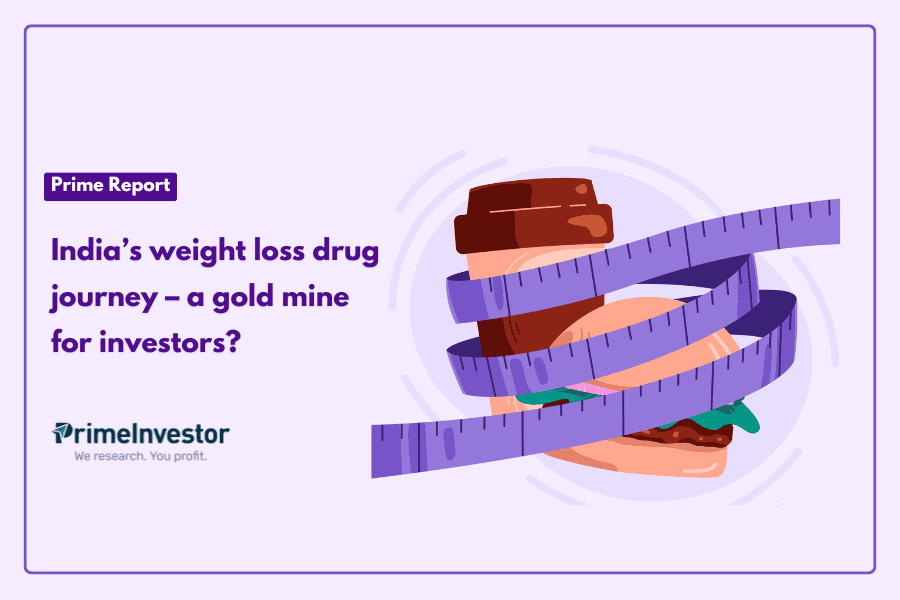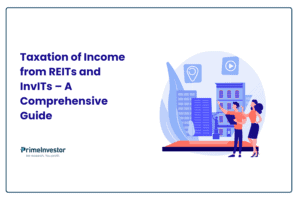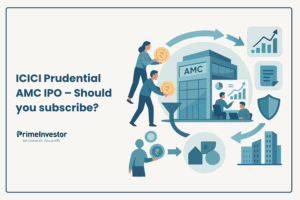It’s Diwali evening. Families gather around tables groaning with gulab jamuns, pedas and samosas. “Thoda aur khao,” echoes from every household—eat a little more. Food is love, tradition, celebration.

But this beautiful culture of feeding has made India the diabetes capital of the world, with 90 million diabetics and counting. The daily chai with biscuits, weekend biryanis, and festive sweets have woven themselves so deeply into our social fabric that changing eating habits feels like abandoning tradition.
Now imagine Uncle Ramesh from one such family – struggling with severe obesity and pre-diabetes for years, quietly using a pen-like device once a week. Not for vanity, but for survival—his doctor warned that without dramatic weight loss, he’s heading toward insulin dependence, heart disease, and worse. The same drug that could save his life also helps him naturally eat smaller portions and crave less of that extra helping of kheer.
This is happening right now with GLP-1 drugs. What started as diabetes medication has become the most talked-about weight loss solution globally. In India, where roughly one in four struggle with obesity and “diabesity” further creates a vicious cycle, these drugs represent far more than a Hollywood trend.
We’re witnessing a mega-trend that could reshape entire industries. The global GLP-1 market is projected to explode from $47.4 billion in 2024 to $471.1 billion by 2032—potential 10x growth representing one of the decade’s largest healthcare opportunities.
India sits at the epicentre of this transformation. With 25% obesity prevalence, 90 million diabetics (projected to reach 150 million by 2050), and a patent cliff beginning in 2026, the country may well be presenting a unique convergence of massive medical need, manufacturing capability, and sector opportunity.
Bottom Line: This isn’t just about weight loss drugs—it’s about redefining chronic disease treatment in a country where food is culture. Let’s understand the potential of this transition.
Diabetes and weight loss – a market unlike any other?
The GLP-1 receptor agonist market represents something unprecedented in pharmaceutical history. Global obesity spending reached nearly $24 billion in 2023—a sevenfold increase in just three years. From 2024 onwards, the market is forecasted to accelerate with a potential 24-27% CAGR through 2028.
The arrival of drugs like Wegovy and Mounjaro marked an inflection point because, for the first time, pharmacological interventions delivered meaningful weight loss of 10-15%. A 2024 estimate by UBS stated that global GLP-1 model forecasts 40 million people on GLP-1s by 2029, with 44% in the US. This translates into $126bn sales by 2029, a 2023-2029 sales CAGR of 30%.
#1 The Economic Impact- $4 Trillion by 2035
The economic implications extend far beyond pharmaceutical revenues. The global obesity epidemic carries an estimated economic burden (estimated by World Obesity Federation) of $4 trillion by 2035—representing 2.9% of global GDP through healthcare costs and lost productivity. This creates both the urgency and economic justification for massive investment in treatment solutions.
#2 India: The Diabetes Capital Facing a “Diabesity” Crisis
India has become the undisputed diabetes capital of the world, with the largest absolute number of diabetics globally. The scale is staggering:
- International Diabetics Federation’s Diabetes estimates about 90 million diabetics in India as of 2024
- Another data from the International Diabetics Federation’s Diabetes Atlas provides an estimate of 127 million pre-diabetics in 2024 – which places them at a risk of progression.
- One in every four having diabetes remain undiagnosed, representing a massive hidden burden.
The “Diabesity” Epidemic: Obesity contributes an estimated 85% toward the risk of type 2 diabetes, and obese individuals are about 7 times more likely to develop type-2 diabetes compared to those at a healthy weight. In India, 90% of type 2 diabetes cases are attributable in part to excess weight or obesity.
Market Reality: The diabetes treatment market in India is enormous, with diabetics spending a median of Rs 13,179 annually on treatment (data as of 2021). But traditional diabetes medications often fail to address the root cause – obesity. This is where GLP-1 drugs become transformative, treating both conditions simultaneously.
What are GLP-1 drugs?
A quick biology recap
Before we dive in, let’s take a quick look at what happens when one eats a meal. A meal, especially one containing carbohydrates triggers the following sequence of events in the human body to manage blood sugar levels.
- The gut releases a hormone called GLP-1 into the bloodstream
- GLP-1 travels to the pancreas and brain where it attaches to special GLP-1 receptors
- Carbohydrates turn into glucose (sugar) and enter the bloodstream, raising blood sugar
- The pancreas releases insulin to help cells use this sugar for energy
- Extra sugar gets stored as glycogen for later use, or as fat if there’s too much
- The pancreas also releases amylin which slows down digestion to prevent blood sugar from spiking too fast
The GLP-1 receptors:
- Stimulates insulin production only when blood sugar is elevated
- Suppresses glucagon (hormone that raises blood sugar) when not needed
- Slows gastric emptying (digestion) to prevent blood sugar spikes
- Reduces appetite and creates feelings of fullness
In people with diabetes, this whole system doesn’t work properly, leading to blood sugar levels that stay too high for too long.
How GLP-1 drugs work
GLP-1 drugs are man-made versions of the natural GLP-1 hormone. They work by copying what the natural GLP-1 does – attaching themselves and activating the GLP-1 receptors and thereby regulating blood sugar and body weight.
You can read more about this process and how GLP-1 drugs work here.
What are GLP-1 drugs used for?
Currently, GLP-1 drugs are used to treat Type 2 diabetes and some are approved for treatment of obesity. However, GLP-1 drugs were originally intended for diabetes only. As it became apparent that the drugs also resulted in reduced appetite and weight loss, they were researched for this purpose and are now used to treat obesity as well.
In the case of diabetes, metformin (a tablet that helps the body to better use the insulin it produces) still remains the treatment of choice. In some cases where this does not work or is not suitable or there is a combination of conditions that have resulted in diabesity, a GLP-1 drug may be used.
The Diabesity Connection
The term “diabesity” describes the dangerous combination of diabetes and obesity that creates a vicious cycle:
- Obesity drives diabetes: Excess fat causes insulin resistance
- Diabetes complicates weight loss: High insulin levels promote fat storage
- Combined health risks: Heart disease, stroke, kidney failure, nerve damage and more.
GLP-1 drugs break this cycle by addressing both conditions simultaneously, making them uniquely positioned in the Indian market where diabesity is becoming increasingly prevalent.
Due to this dual use, many of the GLP-1 drugs have two variants sold under different brand names – one approved for diabetes and the other for obesity.
Like all drugs, these too bring a host of side effects with them and an evaluation of the risks versus the benefits by a doctor is essential. Learn more about these drugs here.
The following are the different GLP-1 drugs available currently
In the US, the following are the main GLP-1 drugs currently available.
*This belongs to a category called GLP-1 / GIP receptor agonist. Because of its dual action, this delivers faster weight loss and lower insulin requirements.
India is not new to GLP-1 drugs and they have been around for some time but the big names that have recently launched are:
While other GLP-1 drugs were available in India, Semaglutide and Tirezepatide were sought-after due to their effectiveness. Since they were not available in India via official channels and no generics were available as they are still under patent, a grey market thrived with smuggled imports from countries like Egypt and unauthorised copycats. As these drugs are now available through lawful channels, they create a potential opportunity for investors.
The opportunities that lie ahead
#1 The patent cliff that could make these drugs more accessible
In India Wegovy (Semaglutide) is priced between Rs. 17,000 and Rs. 26,000 per month, depending on the dosage strength. The monthly cost of Rybelsus (oral semaglutide) in India is approximately Rs. 10,000 for a typical 30-day supply, regardless of the strength.
The monthly cost of Mounjaro (Tirzepatide) in India is between Rs. 14,000 and Rs. 17,500, depending on the dose.
This is not cheap. While diabetes and / or obesity are not rich person problems, the data shows that those who can afford (the richest fifth) it are more likely to get diagnosed and seek treatment. We can also infer from this that GLP-1 drugs could remain an option for the wealthy cohort of the population.
However, Semaglutide (Wegovy) goes off patent in India (as well as other countries such as Canada and Brazil) in 2026 much ahead of going off-patent in the US. This is because Indian patent law does not have provisions for extending patent terms and evergreening (extending patents by making minor modifications). The US however allows for patent extensions.
With the patent expiry in India not far away, several prominent pharmaceutical companies are waiting in the wings to bring out generic versions of Semaglutide.
- Dr. Reddy’s Laboratories is planning a portfolio of 15 GLP-1 products to launch in a phased manner.
- Sun Pharma is working on a novel GLP-1 receptor agonist called Utreglutide with plans to launch in 4 to 5 years
- Cipla management has indicated that they intend to capitalise on the generic GLP-1 opportunity that opens up in 2026.
- Lupin is planning launches to participate in the generic GLP-1 market especially in developing countries.
- Biocon already has a generic version of Liraglutide in the UK. As Semaglutide goes off patent, Biocon plans to get approvals to launch generic versions of this in emerging markets. Plans to be the first to offer generic Semaglutide in Canada.
- Zydus is working on a novel formulation of semaglutide and plans to be a part of the first wave of new launches.
- Glenmark Pharmaceuticals – while Glenmark already has a generic Liraglutide in its portfolio, the Company also plans to launch other GLP-1 agonists in the near future.
As per Goldman Sachs estimates, the looming patent cliff spells a $95 billion market opportunity for this drug globally and from obesity alone. The March 2025 quarter saw Eli Lilly’s revenue surge 45% YoY driven primarily by Mounjaro and Zepbound with revenue from Mounjaro alone more than doubling YoY. GLP-1s are also identified to be the fastest growing drug category by total spending in the US market.
India is no different. The June 2025 update from Pharmarack shows that Indians have taken very well to anti-obesity drugs. The market is currently sized at over Rs. 600 crores (MAT – Moving Annual Turnover), 5 times what it was 5 years ago. While Semaglutide dominates with over 60% share, Tirzepatide is fast catching up and is even coming up with modifications in delivery to help close the gap.
If this wasn’t enough motivation, recent reports indicate that there could be a PLI Scheme announced by the government in 2026, encouraging the manufacture of GLP-1 drugs.
All of this indicates that in India (and a few other countries), GLP-1 drugs could get a lot more affordable in the near future making them accessible to a wider segment of the population.
#2 Expanding Beyond Diabetes and Obesity
GLP-1 drugs are moving well beyond their original diabetes indication. Obesity treatment now represents an equal or larger market, while research pipelines explore applications in Type 1 diabetes, cardiovascular disease, kidney disease, and neurological conditions like Alzheimer’s.
This expansion threatens domestic pharma companies focused on traditional NCD treatments—diabetes and cardiac drugs could lose market share unless these companies enter the generic GLP-1 space.
Meanwhile, microdosing protocols are being studied to reduce side effects while maintaining efficacy. This could make treatments more accessible to price-sensitive consumers and accelerate market penetration.
The broadening therapeutic profile suggests GLP-1 drugs have substantial upside potential beyond current applications.
What next?
India stands at the threshold of a healthcare revolution. As GLP-1 patents expire and Indian pharma giants launch generic versions, treatments once reserved for the affluent could become accessible to millions. Combined with expanding therapeutic applications, this represents a fundamental shift in how NCDs are treated.
The stakes are enormous. Companies that position strategically now, alongside adaptive government policies and insurance frameworks, will define the next decade of healthcare accessibility in India.
This analysis represents preliminary research into India’s GLP-1 opportunity. While too early for specific investment recommendations, we’re monitoring domestic launches, adoption rates, and financial impact closely. As visibility improves, we’ll identify the pharma stocks positioned to capitalize on this watershed moment. For current recommendations, visit Prime Stocks.
This isn’t just about weight loss drugs—it’s about positioning for the future of metabolic health treatment in the world’s most populous nation.
The securities quoted are for illustration purposes only and are not recommendatory.




2 thoughts on “Prime Report: India’s weight loss drug journey – a gold mine for investors?”
Thanks for the article. Can you also do a compendium article on the CDMO companies in India participating in GLP-1 manufacturing opportunity?
Very interesting article!
Isn’t Natco Pharma also proposing to launch one of the GLP-1 drugs?